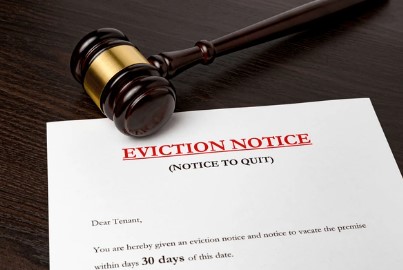Eviction is one of the most stressful and high-risk actions a landlord can take. In California, especially under the Tenant Protection Act of 2019 (AB 1482), landlords must follow strict rules around "just cause" evictions and notice periods. Failing to comply can lead to lawsuits, financial penalties, and lost rental income.
Understanding Just Cause Evictions in California
Under AB 1482 (California Civil Code §1946.2), after 12 months of tenancy, landlords may only evict tenants for “just cause.” Just cause is divided into two categories:
At-fault just cause, such as:
Failure to pay rent
Breach of lease terms
Nuisance behavior or illegal activity
Refusing lawful entry
No-fault just cause, such as:
Landlord or family member moving into the unit
Withdrawing the property from the rental market
Substantial remodels (with permits)
Compliance with a government order
For no-fault just cause, landlords must provide relocation assistance equal to one month’s rent or waive the final month’s rent.
The Legal Eviction Process
Serve Proper Notice
3-day notice to pay rent or quit (for nonpayment)
3-day notice to cure or quit (for lease violations)
30- or 60-day notice (for no-fault evictions, depending on length of tenancy)
File an Unlawful Detainer: If the tenant does not comply after notice, file an unlawful detainer lawsuit in Superior Court.
Court Hearing and Judgment: The court will schedule a hearing. If judgment is in the landlord’s favor, the tenant will be ordered to vacate.
Sheriff Lockout: Only a sheriff can enforce the eviction order. Landlords cannot remove tenants themselves or change locks. Doing so is considered illegal "self-help" eviction.
Common Mistakes Landlords Make
Serving the wrong type of notice or with errors
Attempting to evict without valid just cause
Retaliatory eviction after tenant complaints (illegal under California Civil Code §1942.5)
Removing tenants without a sheriff’s order
Best Practices for Landlords
Document all tenant violations and communications
Always use legally compliant notice forms
Provide relocation assistance where required
Work with an attorney or professional property manager for complex cases
Final Thoughts
Evictions in California are highly regulated, and even small errors can delay the process or put landlords at risk of lawsuits. By understanding just cause rules and following the proper legal steps, landlords can protect their rental property and minimize stress.
At PMI South OC, we guide landlords through every step of the eviction process while ensuring full compliance with California law. Our team handles notices, legal coordination, and tenant communications so you can focus on protecting your investment.
Call us today to learn how our proven property management process helps landlords avoid costly eviction mistakes. Have you performed a rental analysis on your property to understand current market rate and conditions? If not, get your free report here.



